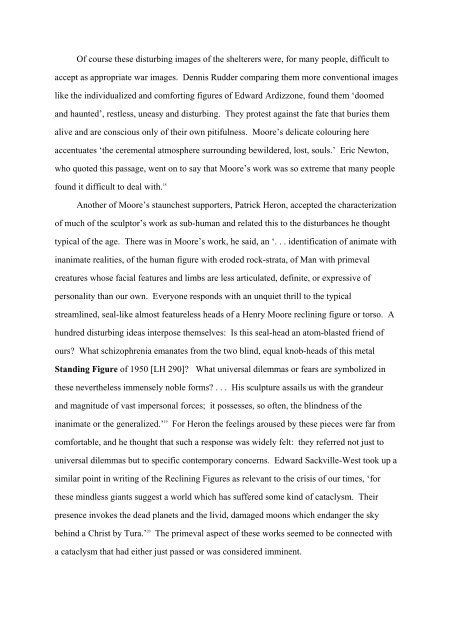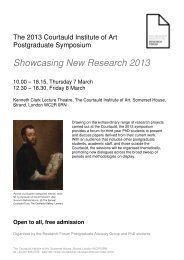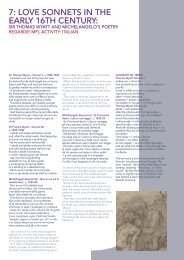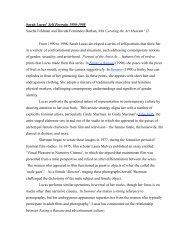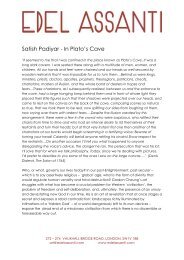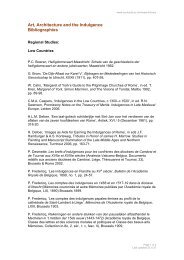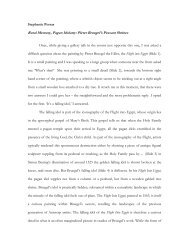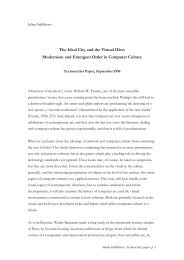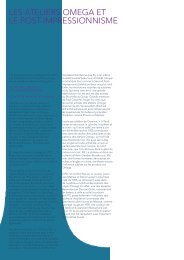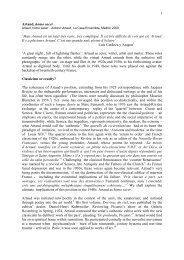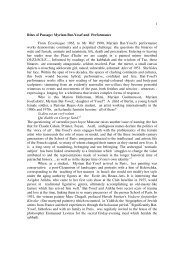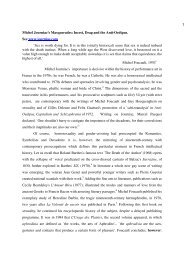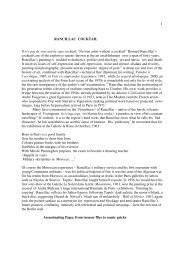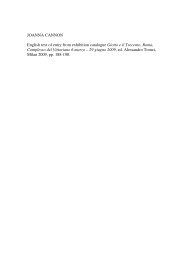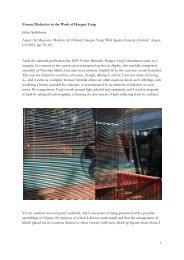Iluna gordelekuan/ Oscuridad en el refugio - The Courtauld Institute ...
Iluna gordelekuan/ Oscuridad en el refugio - The Courtauld Institute ...
Iluna gordelekuan/ Oscuridad en el refugio - The Courtauld Institute ...
You also want an ePaper? Increase the reach of your titles
YUMPU automatically turns print PDFs into web optimized ePapers that Google loves.
Of course these disturbing images of the sh<strong>el</strong>terers were, for many people, difficult to<br />
accept as appropriate war images. D<strong>en</strong>nis Rudder comparing them more conv<strong>en</strong>tional images<br />
like the individualized and comforting figures of Edward Ardizzone, found them ‘doomed<br />
and haunted’, restless, uneasy and disturbing. <strong>The</strong>y protest against the fate that buries them<br />
alive and are conscious only of their own pitifulness. Moore’s d<strong>el</strong>icate colouring here<br />
acc<strong>en</strong>tuates ‘the cerem<strong>en</strong>tal atmosphere surrounding bewildered, lost, souls.’ Eric Newton,<br />
who quoted this passage, w<strong>en</strong>t on to say that Moore’s work was so extreme that many people<br />
found it difficult to deal with. 18<br />
Another of Moore’s staunchest supporters, Patrick Heron, accepted the characterization<br />
of much of the sculptor’s work as sub-human and r<strong>el</strong>ated this to the disturbances he thought<br />
typical of the age. <strong>The</strong>re was in Moore’s work, he said, an ‘. . . id<strong>en</strong>tification of animate with<br />
inanimate realities, of the human figure with eroded rock-strata, of Man with primeval<br />
creatures whose facial features and limbs are less articulated, definite, or expressive of<br />
personality than our own. Everyone responds with an unquiet thrill to the typical<br />
streamlined, seal-like almost featur<strong>el</strong>ess heads of a H<strong>en</strong>ry Moore reclining figure or torso. A<br />
hundred disturbing ideas interpose thems<strong>el</strong>ves: Is this seal-head an atom-blasted fri<strong>en</strong>d of<br />
ours? What schizophr<strong>en</strong>ia emanates from the two blind, equal knob-heads of this metal<br />
Standing Figure of 1950 [LH 290]? What universal dilemmas or fears are symbolized in<br />
these neverth<strong>el</strong>ess imm<strong>en</strong>s<strong>el</strong>y noble forms? . . . His sculpture assails us with the grandeur<br />
and magnitude of vast impersonal forces; it possesses, so oft<strong>en</strong>, the blindness of the<br />
inanimate or the g<strong>en</strong>eralized.’ 19<br />
For Heron the fe<strong>el</strong>ings aroused by these pieces were far from<br />
comfortable, and he thought that such a response was wid<strong>el</strong>y f<strong>el</strong>t: they referred not just to<br />
universal dilemmas but to specific contemporary concerns. Edward Sackville-West took up a<br />
similar point in writing of the Reclining Figures as r<strong>el</strong>evant to the crisis of our times, ‘for<br />
these mindless giants suggest a world which has suffered some kind of cataclysm. <strong>The</strong>ir<br />
pres<strong>en</strong>ce invokes the dead planets and the livid, damaged moons which <strong>en</strong>danger the sky<br />
behind a Christ by Tura.’ 20<br />
<strong>The</strong> primeval aspect of these works seemed to be connected with<br />
a cataclysm that had either just passed or was considered immin<strong>en</strong>t.


